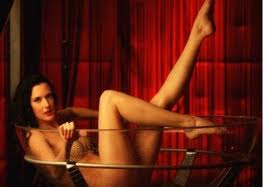Barbizon (little village near Paris) : a must to see !!!!
History of Barbizon through its painters :
Beginning in the 1850s, foreigners from throughout Europe, from Russia, from the United States, working in Parisian studios were joining their French colleagues coming to Barbizon each Spring.
In 1867 the hotel Siron (now the Bas-Breau), also known as “L’Exposition” - the manager had opened an exposition room to show works by visiting painters - was welcoming a new clientele of painters as well as writers, often foreigners such as Stevenson, who until the end of the century swarmed over the area including Marlotte, Grez sur Loing and Moret. So, early on, the name of Barbizon was known, and several articles from the magazine “L’Illustration” featured the“Auberge Ganne” and its decoration by the painters. The Goncourt brothers described the Inn in their work Manette Salomon. Foreign artists returning to their countries spread word of the life in Barbizon: Knaus and Brendel in Germany, Hunt in the United States; Israels and Roelofs in Holland, etc. After 1875, the French of the original group composed of Corot, Daubigny, Diaz, Dupre, Jacque, Millet, Rousseau, and Troyon had passed on. But from 1863 the younger generation of Monet, Renoir and Sisley had begun making the pilgrimage to the forest of Fontainebleau in the footsteps of their elders, the Barbizon painters, to take up the torch and create a new vision of nature. They formed a homogenous grouping, known as the Impressionists, applying common methods and organising their expositions between 1874 and 1886. It was only in 1890 that the term “ School of Barbizon” was given to the original group following the publication in London of the work by David Croal Thomson titled “The Barbizon School of Painters.” There were by then not very many painters left in Barbizon but, rather, writers, philosophers, singers and actors such as Galtier-Boissiere, Taine, Seailles, etc. The hotels and restaurants had multiplied tenfold and tourists flocked in on the little train that brought them directly to Barbizon from Melun. |
Until then, Chailly en Biere had been the only large village – it had a town hall, a parish church, a cemetery and all the shops necessary for the 1000 souls living there. Barbizon was just a hamlet of less than 300 poor inhabitants, mostly day labourers and woodsmen. It was to Chailly that the stage coach came, stopping at theInn of the White Horse – the post relay. Visitors to the Forest of Fontainebleau, had then to alight at Chailly or in Fontainebleau where they could find food and lodging.
Beginning in the 1850s the railroad brought quicker access to Melun or Fontainebleau, even though there remained a dozen or so kilometres on foot to reach the “promised land.” And by the end of the 19th century a little train was running between Melun and Barbizon. So as time went by, Barbizon surpassed Chailly - firstly in the number of visitors and furthermore in the quality of its cosmopolitan society of painters, writers and musicians. Yet , 100 years later, in spite of the international renown of the Barbizon painters, the church seen in the background of the most famous painting of Jean-François Millet is that of Chailly. Father Chicoré, the shepherd immortalised by Ferdinand Chaigneau, lived in Chailly. Barbizon still has its ‘Chemin de la Messe’ – the roadway leading the folks of Barbizon to Chailly. And finally, side by side for all eternity, in the cemetery of Chailly, lie the two friends who made Barbizon famous, Jean-François Millet and Theodore Rousseau. Nevertheless, the little hamlet of Barbizon was transformed. A number of hotels were opened, vacation homes for rent or sale were built, while Chailly remained a rural community concentrating its businesses and profiting from the influx of visitors to Barbizon. Separation of the two became unavoidable, and in 1903 Barbizon became an independent community.
My recommendation :2 hours tour to discover the circuit of the Barbizon painters
A loop marked in yellow lead you in the footsteps of landscape painters of the nineteenth century. At the heart of the village of Barbizon, you can visit the Ganne’s Auberge where they were boarded, today became the county museum, the house Theodore Rousseau and Jean-Francois Millet Workshop. In the forest, you will find the rocky chaos painted by Corot and the groves of old oaks which Lantara kept his cows.
|





Comments
Post a Comment